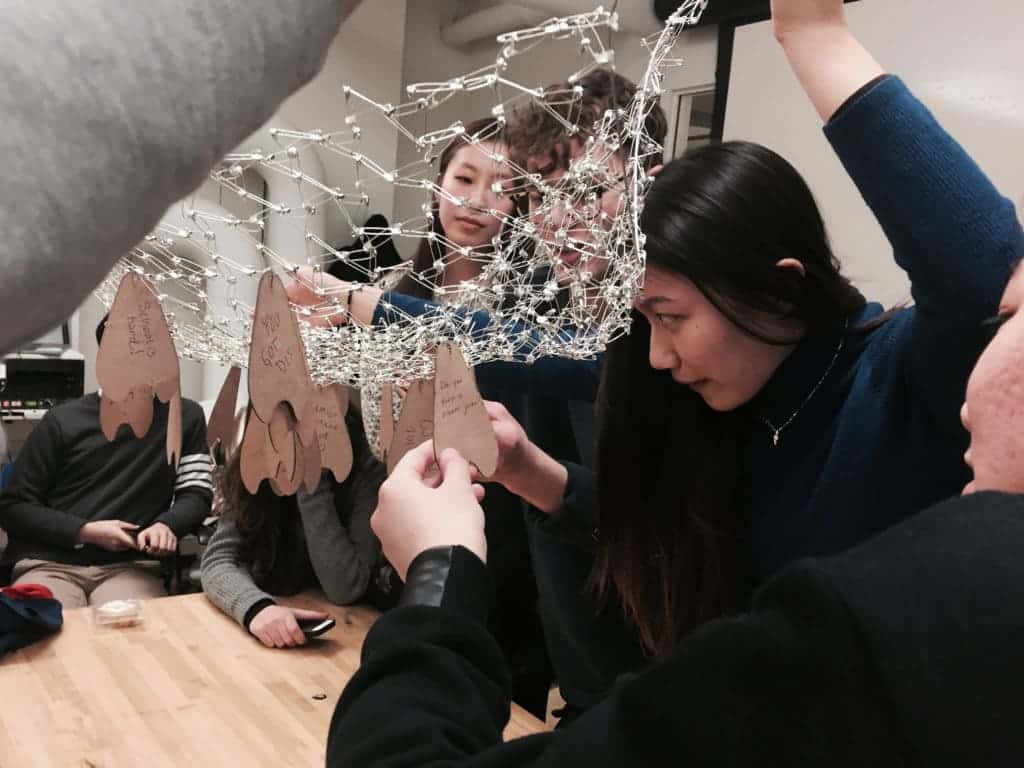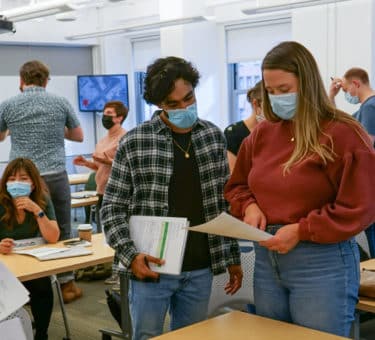Imagine a magical space that is always filled with people ready to test out new prototypes. As a designer, every decision you make and every aspect of the experience you bring to the space will have an immediate impact. You can see what works, what doesn’t and hone your ideas into better and better prototypes that empower the people in the room. Doesn’t this sound like an ideal design project?
Imagine no longer – these magical spaces exist! They’re called classes, and I’m guessing you’ve been in a few. But have you ever taught one? As a designer at Tandem and an instructor in the Architecture, Interior Architecture, and Designed Objects department at the School of the Art Institute of Chicago (SAIC) I’ve found that teaching continues to inspire me to learn new approaches to design.
Teaching a class is a laboratory for testing experiential prototypes on a roomful of users. If you approach teaching with a designer’s mindset, you become hyper aware of every little decision you make and how it affects your students. Which class activities are more engaging than others? How can they flow from one to the next? What are the best environments for collaboration?
Here are a few things I’ve learned through the constant feedback of working with students in my class:

Collaboration is built on community
It’s hard to find projects in any field that don’t rely on collaborating with others. More and more tools are focusing on facilitating collaboration, from Slack to Skype. Teaching design, I knew I needed to give my students a chance to collaborate with their peers, not just focus narrowly on their own individual projects. My first attempts at short collaborative projects with students were fun, but a mess. Temperaments clashed, some students didn’t want to engage, and others took over with strong personalities. Sound eerily familiar? Unfortunately, collaboration can look a lot like this in the professional world too.
Slowly, I began to learn that collaboration in the classroom needs to be carefully cultivated. Instead of dumping a bunch of information on my students in the first few weeks, I focus on activities that push them to get to know each other personally. A well-executed activity that gets students talking to each other, sharing personal projects or stories, and gaining each other’s trust is worth a dozen lectures on design methods. Only after that trust and familiarity is gained will students be able to navigate the complexities of a collaborative project together.
I’ve found building a community to be just as important when working with a client or a team of professionals. Collaboration is so much more difficult when trust and familiarity are missing, which can lead to miscommunication or a clash of personalities. Designing for collaboration isn’t just about providing the means to collaborate, it’s about helping a group cultivate their own community.

Empower users to make their own decisions
A common experience with classes is a teacher who has a lesson plan and stands at the front of a room executing that plan. I started teaching this way too, coming up with detailed lesson plans that I thought the students would respond to most. But during collaborative projects, I began experimenting with how little direction I could give my students. Instead of telling them what we were going to do, I focused on setting up an easy-to-follow flow of activities to help them make their own decisions.
The results have been magical, regardless of age group (I’ve tried this with students in middle school, high school, and college). Students became more engaged, took more ownership of their ideas and process, and grew in their creative confidence.
Slowly I’ve begun to realize that students can be empowered to take charge of more and more of their education. They have designed their own group feedback sessions, collaborative projects, even future pathways through college and beyond.
Empowering people to confidently make their own choices. Isn’t this what we as designers all want for our users, regardless of the product or experience? Never had I learned that lesson so clearly before I taught a class full of students.
Teaching is a design opportunity
Classes are a fantastic laboratory to test ideas and empower students. When you’re in charge of designing an entire experience for a group of people every week you will be hard pressed not to learn ways to improve your work as a designer. Through teaching I’ve learned that designing for collaboration requires investment in community, and that users are more engaged and successful when they are set up to confidently make their own decisions.









